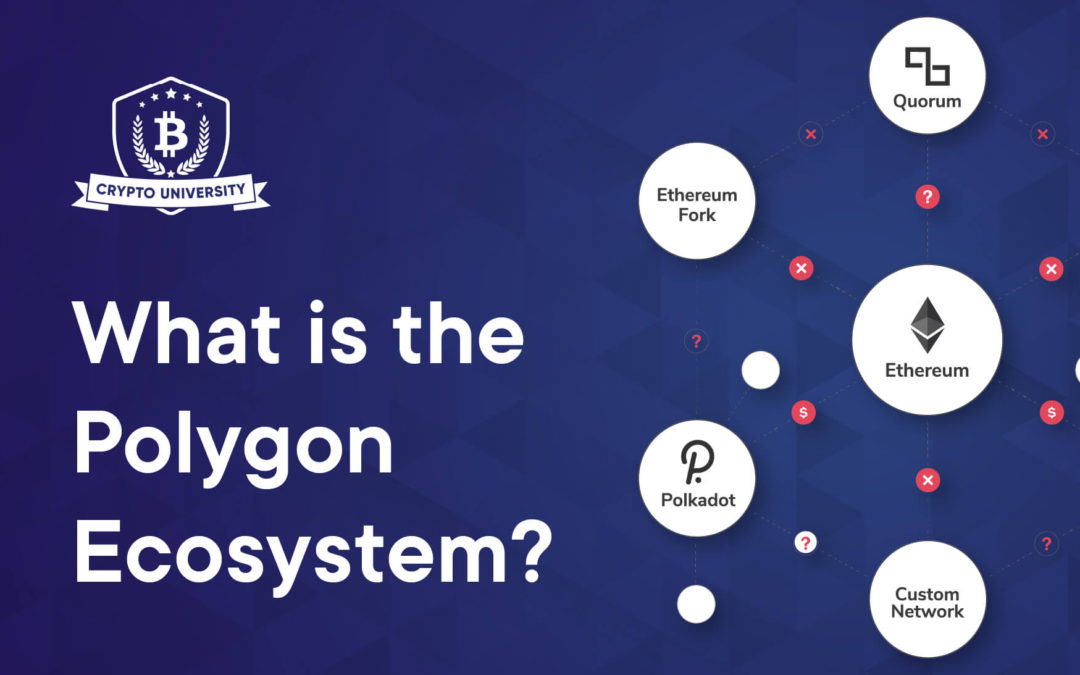Mark’s local currency is dying to inflation, in order to hedge against it he buys $300 of Ethereum (ETH). In his local currency, this is worth a lot and it took him months to save up. Mark learns about Decentralised Finance (DeFi), which is a blockchain based finance where one does not need to use an intermediary party or bank to take part in financial investments, etc. Mark decides he wishes to make his $300 work for him, so he sends his ETH to his wallet, however, he realises that the gas costs would sometimes be $60 or $30 and those dollars are precious.
Now if Mark used Polygon (Formerly known as Matic), then he would still be able to take part in DeFi and not use a considerable chunk of his savings on the fees alone!
Polygon, formerly known as Matic is a sidechain solution to the issues plaguing ETH right now, many of these issues can lead to financial exclusion of people. This is an issue as it is against the very spirit of what cryptocurrencies and DeFi stand for.
The big issues plaguing ETH and Bitcoin (BTC) currently are the high gas fees & low transactions per second (TPS). The main contribution here to financial exclusion is the high gas fees, as the network gets used more the fees tend to go up.
The project was originally aimed at being a solution to the issues stated above but with the many upgrades coming to the ETH blockchain, they had to adapt. They have now shifted their focus to providing a platform for blockchains to be built upon and provide the tools to help solve scalability to DeFi projects, etc on the ETH blockchain.
Polygon is built by a decentralized team of contributors from all over the world. The main contributors to the cryptocurrency are;
The Polygon network utilizes the ETH blockchain for added security and runs as if another layer of skin to the ETH chain. The network uses the Matic token for it’s gas fees. It can allow you to use, store and spend some ERC20 (Ethereum blockchain based crypto) on the Polygon network at near zero cost. Polygon has since changed their name to show their shift in focus from a layer 2 solution to focusing on scalability for ETH based Dapps via being a sidechain.
This occurs by creating a copy of the ETH chain, called a child chain. This child chain is up to 500x faster than the ETH chain and they are separated by a middlemen of public nodes (imagine it as a watchdog) which periodically take snapshots (pictures) of the child chain and sends them to the ETH blockchain. These nodes will allow someone to recover their funds even if the system goes down on the Polygon side.
In order to be able to do this process, the validator nodes stake theirs or others crypto. Should they tamper with the snapshot at all, some or all the funds will be destroyed as a punitive measure. Polygon also allows for the staking of its native token, Matic, via it’s website. You can find a link to stake here.
The Polygon project is an amazing project worth following and hodling! It allows for some amazing technologies to help address the scalability issues with the ETH blockchain. Instead of competing against the all mighty powerful ETH blockchain, they choose to work in tandem with it. Allowing for a somewhat symbiotic relationship between them.
You can review our available course materials to learn more about blockchain and cryptocurrency here.
By viewing any material or using the information within this publication you understand that this is general education material and you can not hold any person or entity responsible for loss or damages resulting from the content or general advice provided here. Trading cryptocurrency has potential rewards, but also potential risks. You must be aware of the risks and be willing to accept them in order to invest in the markets. Only trade with funds you can afford to lose. This publication is neither a solicitation nor an offer to buy/sell cryptocurrency or other financial assets. No representation is being made that any account will or is likely to achieve profits or losses similar to those discussed in any material on this website. The past performance of any trading system or methodology is not necessarily indicative of future results.
Written by Alexander Hilton © Crypto University 2021
